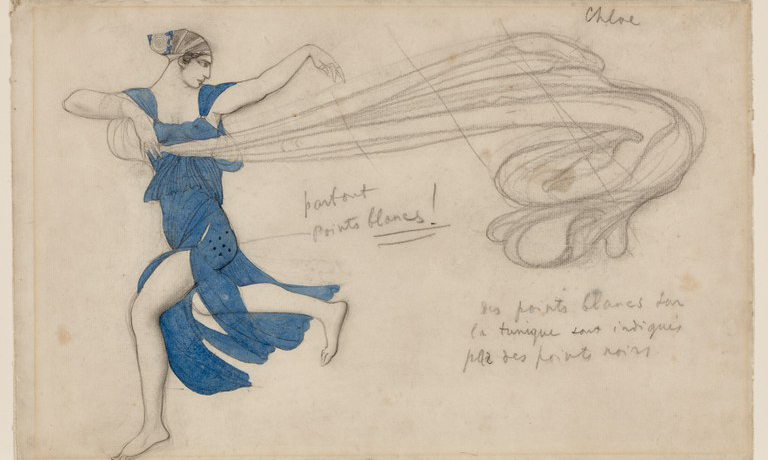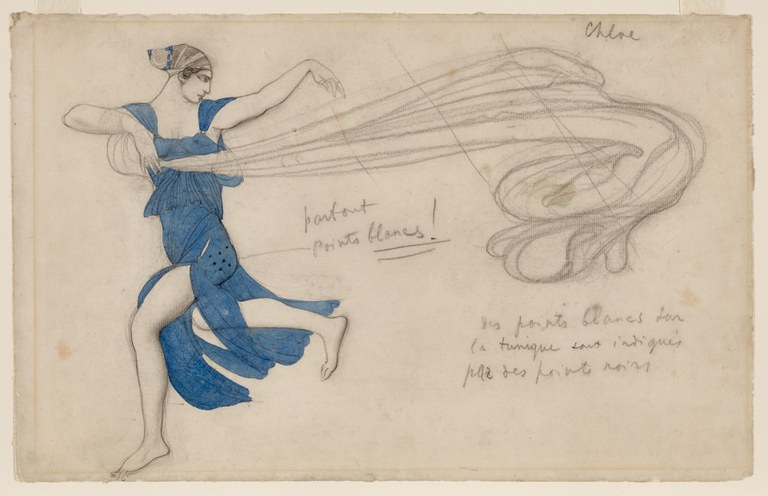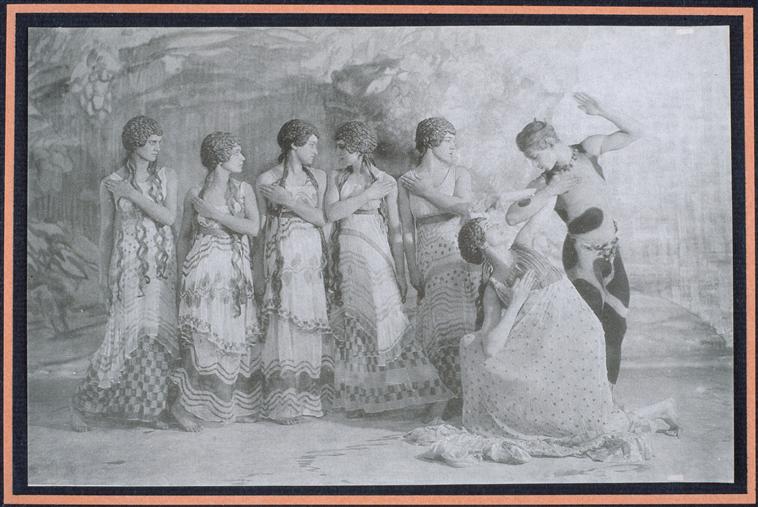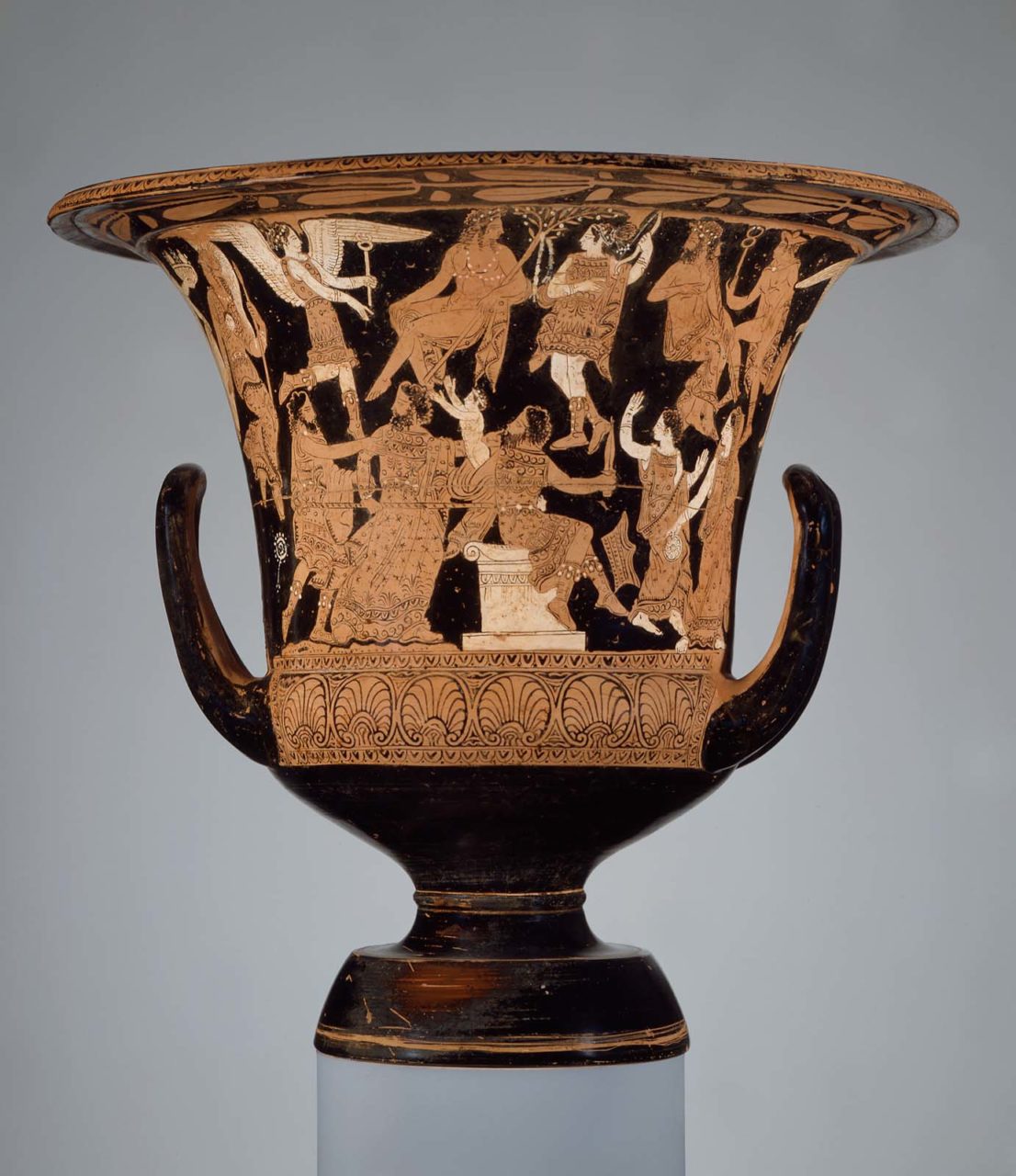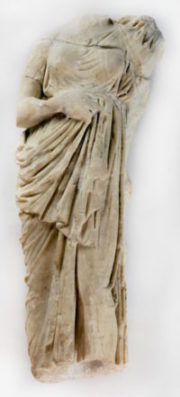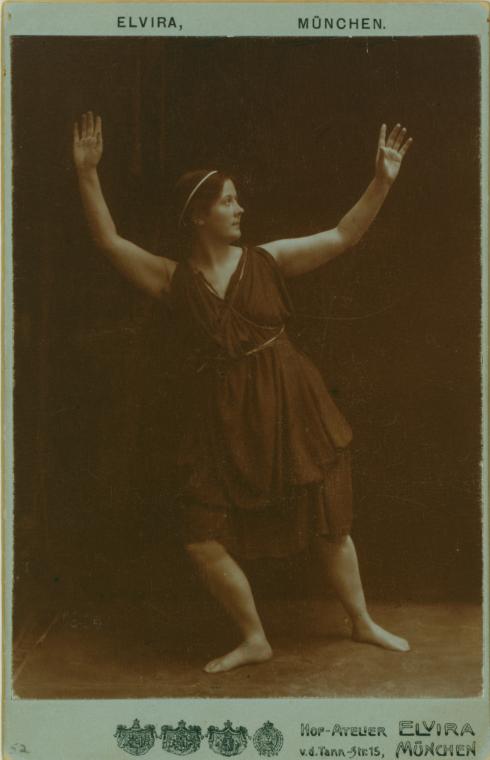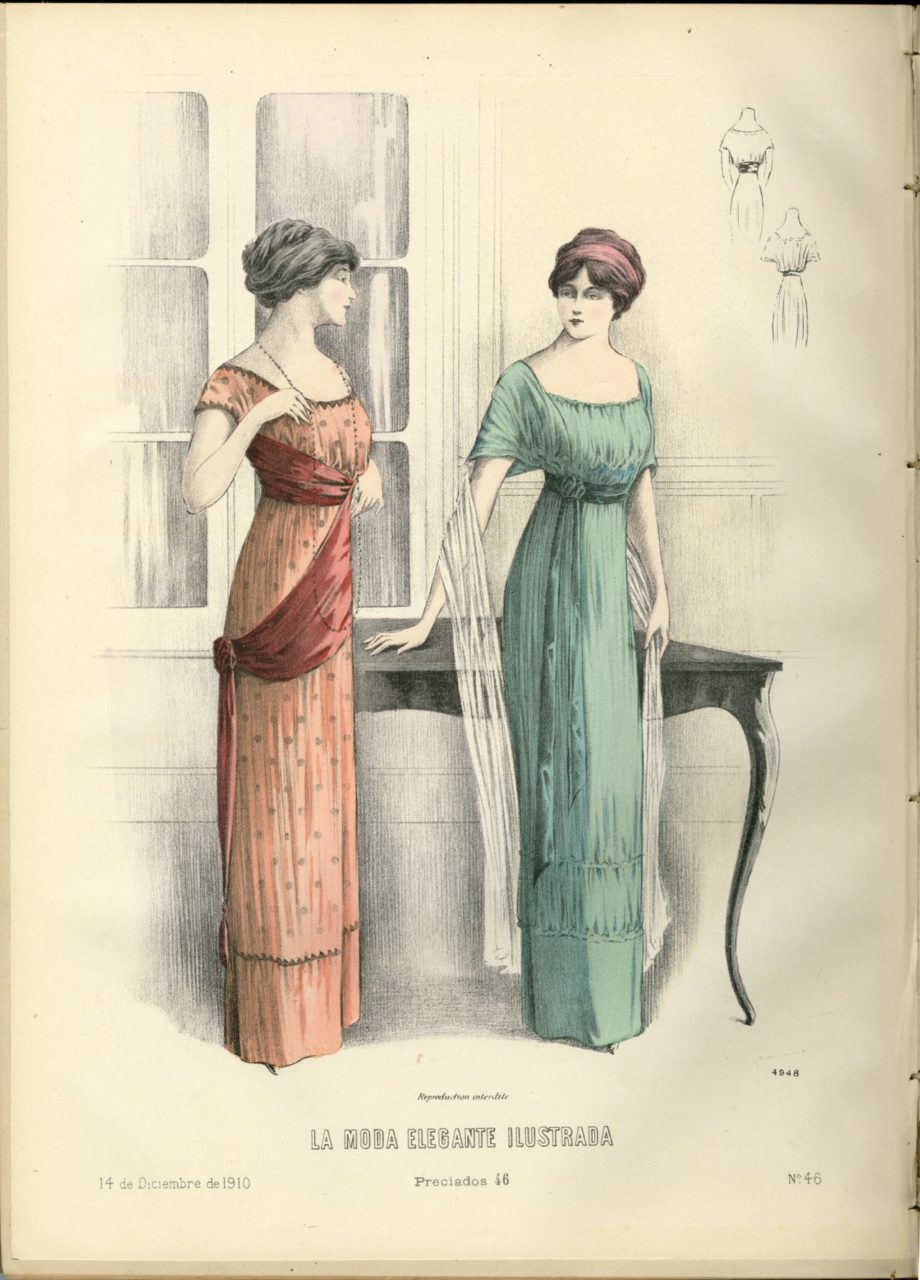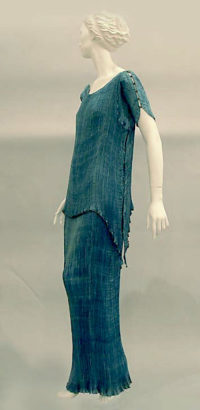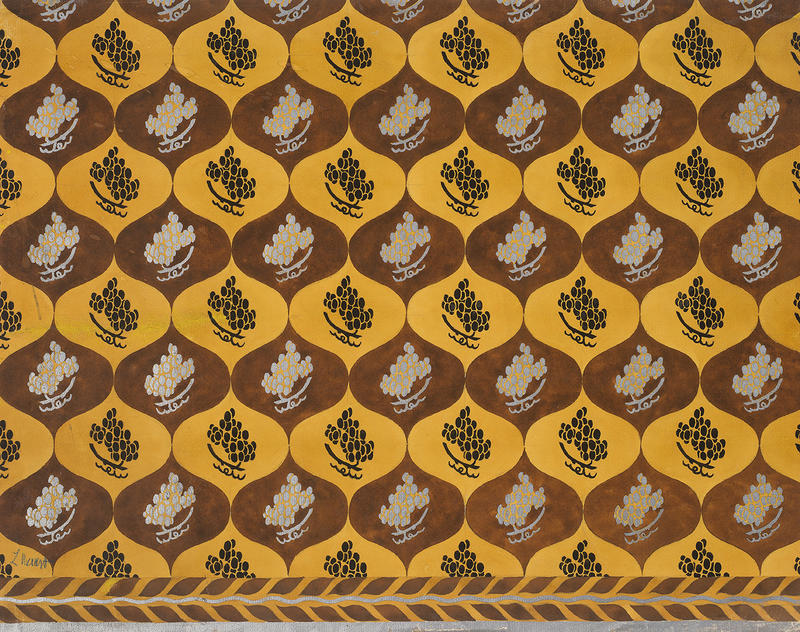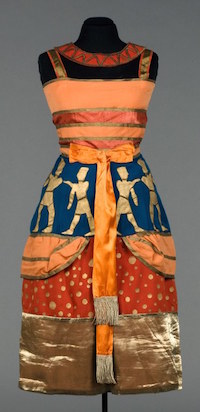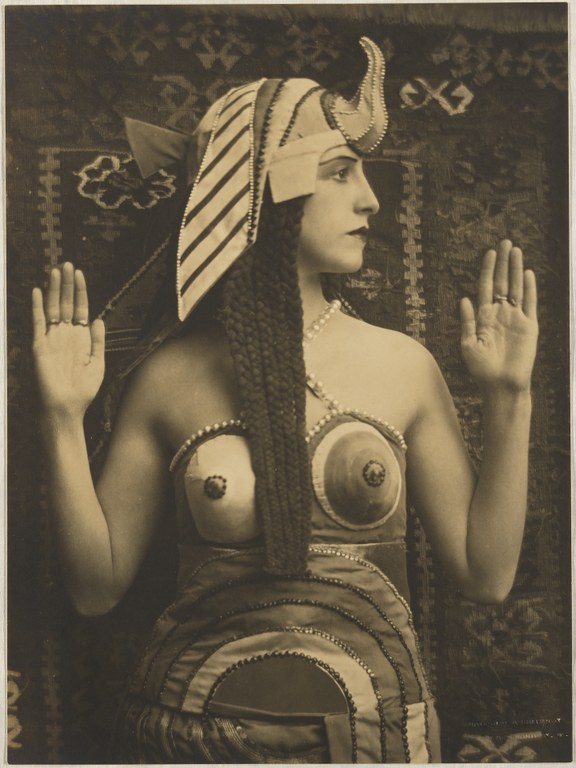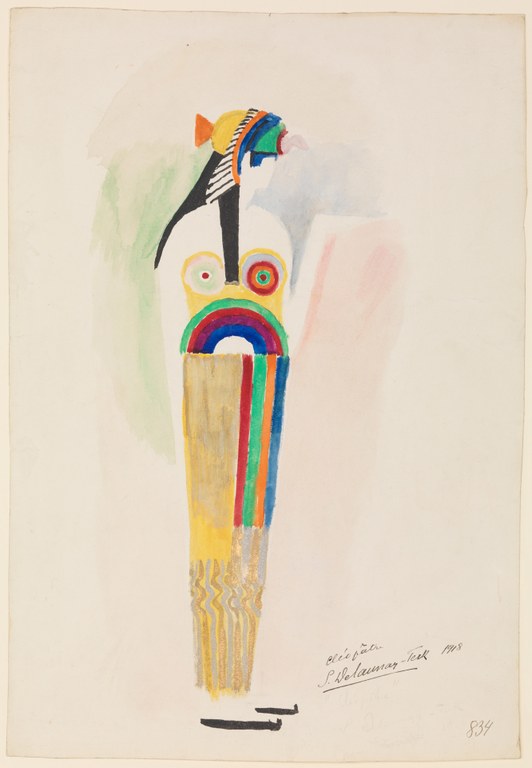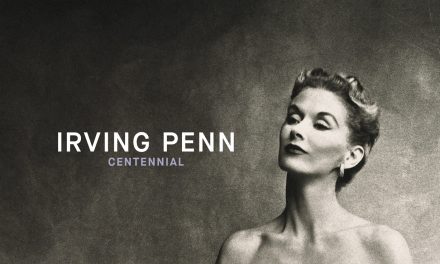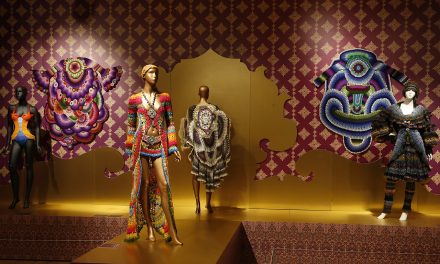The Ballets Russes, a ground-breaking dance company at the beginning of the 20th century, took inspiration from ancient art and sculpture from Greece, Rome, and Egypt to create costumes, poses, and set designs as “Hymn to Apollo: The Ancient World and the Ballets Russes” explores.
T
he Ballets Russes, a Paris-based dance company led by Sergei Diaghilev (1872-1929) presented a new, modern vision of dance in the early 20th century that frequently drew inspiration from the ancient world. No technical treaties or dance notation systems have survived from ancient times to take reference from, but through ancient artifacts such as painted pottery, friezes, and reliefs, Ballets Russes choreographers and designers were able to develop their own interpretations of ancient dance. The company benefited from fantastic art and design talent, including artist and designer Léon Bakst (1866-1924), the iconic dancer of the early 20th century, Isadora Duncan (1877-1927), and artist Sonia Delaunay (1885-1979). Figure 1 shows Léon Bakst’s illustration for a costume design in Daphnis et Chloé. “Hymn to Apollo: The Ancient World and the Ballets Russes,” on view at the Institute for the Study of the Ancient World at New York University, explores how ancient art and mythology revolutionized not only dance, but also costume design. The Ballets Russes embodied “the ancient ideal of dance as a medium reflective of life and as an art form integrated with religious ritual” (Fitzgerald 20), and incorporated Grecian, Roman, and Egyptian styles, making a strong impact on early 20th-century fashion as well.
The first section of the exhibition displays artworks that possibly influenced the astounding performance of L’Après-midi d’un Faune (1912). L’Après-midi d’un Faune [The Afternoon of a Faun] (Fig. 2), choreographed for the Ballets Russes by Vaslav Nijinsky, was a story of sexual awakening (Villarreal). The costumes for this performance were designed by Léon Bakst, who “abandoned corseted tutus in favor of loose, sensuously suggestive dress inspired by the art of Greek antiquity” (Fitzgerald 20). Bakst’s liberating costume idea initially came from his study of the ancient art collections at the Hermitage and Louvre museums as well as his travels to Greece and Crete. His fascination with the ancient civilizations of Greece and the “Orient” contributed to his designs for textiles and haute couture. In the exhibition catalogue, Hymn to Apollo: The Ancient World and the Ballets Russes (2019), historian Clare Fitzgerald identifies Bakst’s main source of inspiration for the L’Après-midi d’un Faune:
“he imported many of their forms, motifs, and colors into his set and costume designs: … kraters in the ‘bas-relief’ of L’Après-midi d’un Faune; and the meander ornament and cable pattern that would reappear in numerous costume and textile designs.” (59)
In a mixing bowl (calyx-krater) (Fig. 3) from 380-360 BCE, the female figures are wearing chitons and himations “richly embroidered with stars, wave-pattern, palmettes, and egg-pattern,” like the female dancers of L’Après-midi d’un Faune (Fig. 4) (MFA Boston). In addition, Bakst, paying homage to the Greeks, designed garments that amplified body movements. He attached veils, feathers, jewelry, and included intricate abstract patterns on dresses to extend and emphasize the body’s movement through space.
Fig. 1 - Léon Bakst (Russian, 1866-1924). Costume Design: Daphnis et Chloé, 1912. Graphite and tempera and/or watercolor on paper; 28.2 x 44.7 cm (11.1 x 17.5 in). Hartford: Wadsworth Atheneum Museum of Art, 1933.392. The Ella Gallup Sumner and Mary Catlin Sumner Collection Fund. Source: Institute for the Study of the Ancient World
Fig. 2 - Baron Gayne de Meyer Adolf de (French, 1868-1946). Nijinski and six dancers, 1914. Collotype; 14.1 x 21.8 cm (5.55 x 8.58 in). Paris: Musée d'Orsay, PHO1988-13-14. Manual donation of Mr. Michel de Bry, 1988. Source: L’Agence Photo RMN Grand Palais
Fig. 3 - The Nazzano Painter (Etruscan, 400BCE). Mixing bowl (calyx-krater), 380–360 BCE. Ceramic, red figure; height: 49.1 cm; diameter: 53.7 cm (height: 19 5/16 in; diameter: 21 1/8 in). Boston: Museum of Fine Arts, 1970.487. purchased by MFA from Andre Emmerich Gallery, Inc., November 10, 1970. Source: MFA Boston
Fig. 4 - Baron Gayne de Meyer Adolf de (French, 1868-1946). Dancer, face in profile, in the foot, arms wide open, 1914. Collotype; 16.2 x 12. 2 cm (6.37 x 4.80 in). Pairs: Musée d'Orsay, PHO1988-13-27. Manual donation of Mr. Michel de Bry, 1988. Source: L’Agence Photo RMN Grand Palais
Fig. 5 - Artist unknown. Statuette: Female Figure, 400–300 BCE. Marble; h: 40.6 cm; w: 15 cm; d: 10.8 cm (h: 15.98 in; wl 5.90 in; d: 4.25 in). Philadelphia: University of Pennsylvania Museum of Archaeology and Anthropology, MS4025. Museum Purchase; subscription of Lucy Wharton Drexel, 1901. Source: Institute for the Study of the Ancient World
It was not only Bakst who adopted this silhouette. Isadora Duncan, an American dancer and choreographer, also enjoyed performing in Greek-inspired, loose-fitting costumes. Duncan was wildly popular for performing barefoot in diaphanous dresses derived from Hellenistic statuettes of women in flowing draperies (Fig. 5) (Villarreal). As Fitzgerald notes, Bakst considered Isadora Duncan’s antique evocations to be transformative: “Bakst contended that the renaissance of the Russian ballet had come about thanks to her ‘emancipation of the body’” (65). Part of the thrill of seeing Duncan perform was the possibility of tantalizing glimpses of her body as she executed graceful dance movements (Fig. 6). In The History of Modern Fashion (2015), fashion historians Daniel James Cole and Nancy Deihl note her influence, writing that “her style reflected the Greek modes in high fashion, and her dances were even imitated in fashion shows” (116). In the earlier years of the 1910s, neoclassical Directoire-influenced dresses (Fig. 7)—what are more commonly known as Empire-waisted sheath gowns—became popular again. Dresses with simple T-shaped construction, typical of ancient garments, were commonly worn and referred to as “tunic” gowns (Fig. 8). Isadora Duncan became a fashion icon of the 1910s, a decade during which ancient-themed dances became favored.
Fig. 6 - Hof-Atelier Elvira (German). Isadora Duncan, 1904. Cabinet photograph; 17 x 10 cm (6.69 x 3.93 in). New York: The New York Public Library, ISADORA_0052V. Jerome Robbins Dance Division, created by NYPL. Source: NYPL
Fig. 7 - Artist unknown. Fashion plate from La Moda Elegante Ilustrada, December 14, 1910. Lithograph. New York: SPARC, plate 165. Image reproduced in Fashion plates: 150 Years of Style. Source: SPARC
Fig. 8 - Mariano Fortuny (Italian, 1871-1949). Evening dress, 1930s. Silk, glass, cotton. New York: The Metropolitan Museum of Art, C.I.58.61.4. Gift of Estate of Agnes Miles Carpenter, 1958. Source: Met
Artist and costume designer Léon Bakst also experimented with color and pattern, often involving combinations of gold, blue, green, black, and white. Fitzgerald notes Bakst’s attention to color in Hymn to Apollo: The Ancient World and the Ballets Russes (2019):
“Bakst’s sketchbooks indicate that one of his strongest impressions from the Greek expedition was, indeed, of the traces of colors still visible in, for example, the wall paintings of Knossos.” (63)
Bakst came across a variety of colors–hematite (brown-red), ochre, malachite, conichalcite (dark green), and Egyptian blue, which he later utilized in his set, costume, and textile designs (Fig. 9). Many of these colors and design elements were not confined to Greece, as Bakst continued to explore orientalism and Egyptian culture. Art depicting Egyptian gods, pharaohs, warriors, and priests became a rich resource for Bakst to create costumes of Cléopâtre, one of the most successful Ballets Russes performances in 1909. The costumes of the primary characters of Cléopâtre included broad collar necklaces, cuffs, and armlets of bold colors as well as striped fabrics to imitate the pleats of Egyptian garments (Fig. 10).
However, after a fire destroyed Bakst’s original costumes, Sergei Diaghilev commissioned French artist Sonia Delaunay to produce new costumes for Cléopâtre. Fitzgerald notes that Delaunay “also used bold colors but incorporated flatness found in Egyptian models to create geometricized versions of ancient Egyptian dress” (87). A clear example of her geometricized designs is the vulture headdress. Egyptian queens wore the vulture headdress as a symbol of divinity, associated with the protector goddess Nekhbet. Figure 11 is a small relief that depicts a female, possibly a goddess, with a vulture headdress. In Delaunay’s version of the vulture headdress, the wings, head, and tail of the bird become abstract and pure forms (Fig. 12). Figure 13 shows a colored sketch of Sonia Delaunay’s costume design for the title role. Delaunay advocated reduction of detail in her artworks, which explains this design choice. Like Bakst and Delaunay, other artists and designers of the period also sought inspiration from the ancient world and created their own versions based on that art.
Fig. 9 - Léon Bakst (Russian, 1866-1924). Fabric design with a grape motif, 1922. Gouache and metallic paint on paper; 51.4 x 65.4 cm (20 1/4 x 25 3/4 in). San Antonio: McNay Art Museum, TL1998.87. Gift of Robert L. B. Tobin. Source: McNay Art Museum
Fig. 10 - Léon Bakst (Russian, 1866-1924). Costume for a Female Slave, from Cléopâtre, 1913. Wool, silk, lamé, and ribbons. Stockholm: Dansmuseet—Museum Rolf de Maré Stockholm, DM 1971/64. Source: Institute for the Study of the Ancient World
Fig. 11 - Artist unknown. Plaque Depicting a Goddess or Queen, and on Opposite Side a King, 400–200 BCE. Limestone, paint; h: 18.7 cm; w: 11.5 cm; d: 2.2 cm (h: 7 3/8 in; w: 4 1/2 in; d: 7/8 in). New York: The Metropolitan Museum of Art, 07.228.2. Rogers Fund, 1907. Source: Met
Fig. 12 - Malcolm Arbuthnot (British, 1877-1967). Photograph: Lubov Tchernicheva in Cléopâtre, 1918. Gelatin silver print, mounted on card; 20 x 14.9 cm (7.8 x 5.8 in). Cambridge: Harvard Theatre Collection, Houghton Library, Harvard University, MS Thr 464 (14), folder 1. Purchased with the Howard D. Rothschild Fund, 1995. Source: Institute for the Study of the Ancient World
Fig. 13 - Sonia Delaunay (French, 1885-1979). Costume Design: Cléopâtre, 1918. Watercolor, metallic paint, and graphite on paper; 47 x 32.7 cm (18.5 x 12.8 in). New York: The Metropolitan Museum of Art, 2007.49.36. Bequest of William S. Lieberman, 2005. Source: Institute for the Study of the Ancient World
“Hymn to Apollo: The Ancient World and the Ballets Russes,” examines how dancers, artists, and designers looked to the ancient world not to reproduce exactly what was, but to recreate and build on an aesthetic that was relevant. The exhibition beautifully showcases the costume designs and illustrations that resulted from the deep inspection of ancient cultures by Léon Bakst, Isadora Duncan, and Sonia Delaunay. “Hymn to Apollo: The Ancient World and the Ballets Russes” is on view until June 2, 2019 at the Institute for the Study of the Ancient World at New York University.
Visit the Institute for the Study of the Ancient World website for more information: “Hymn to Apollo: The Ancient World and the Ballets Russes”
References:
- Cole, Daniel James, and Nancy Deihl. The History of Modern Fashion: From 1850. London: Laurence King Publishing, 2015. http://www.worldcat.org/oclc/900012311.
- Fitzgerald, Clare. Hymn to Apollo: The Ancient World and the Ballets Russes. Princeton University Press, 2019. https://press.princeton.edu/titles/30287.html.
- “Mixing Bowl (Calyx-Krater).” Museum of Fine Arts, Boston, April 26, 2019. https://www.mfa.org/collections/object/mixing-bowl-calyx-krater-154445.
- Villarreal, Jose. “The Institute for the Study of the Ancient World Presents ‘Hymn to Apollo: The Ancient World and the Ballets Russes.’” artdaily.org. Accessed May 10, 2019. http://artdaily.com/news/112252/The-Institute-for-the-Study-of-the-Ancient-World-presents–Hymn-to-Apollo–The-Ancient-World-and-the-Ballets-Russes-#.XNUWKutKhE5

